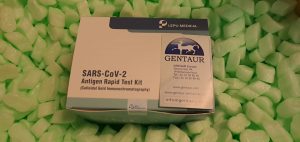An remoted human skull, dated to the early Eneolithic interval, was found in 2015 on the high of a vertical shaft within the pure Marcel Loubens gypsum Cave (Bologna space, northern Italy). No different anthropological or archaeological stays have been discovered contained in the cave. In different caves of the identical space anthropic and funerary use are attested from prehistory to newer durations. We targeted on investigating the circumstances surrounding the loss of life of this particular person, because the skull reveals indicators of some lesions that seem like the outcomes of a perimortem manipulation in all probability carried out to take away smooth tissues.
Anthropological analyses revealed that the skull belonged to a younger girl. We analysed the taphonomic options and geological context to grasp how and why the skull ended up (by accident or deliberately) within the cave. The analyses of each the sediments collected contained in the skull and the incrustations and pigmentation overlaying its outer floor urged that it fell into the cave, drawn by a move of water and dirt, seemingly from the sides of a doline. The unintentional nature of the occasion can be seemingly confirmed by some autopsy lesions on the skull. The comparability with different Eneolithic archaeological websites in northern Italy made it doable to interpret the discover as seemingly being from a funerary or ritual context, during which corpse dismemberment (specifically the displacement of crania) was practiced.
Forensic anthropology consists of, amongst different functions, the optimistic identification of unknown human skeletal stays. Step one on this course of is an evaluation of the organic profile, that’s: intercourse, age, stature and ancestry. In forensic contexts, age estimation is without doubt one of the predominant challenges within the technique of identification. Not too long ago established admissibility standards are driving researchers in direction of standardisation of methodological procedures. Regardless of these adjustments, expertise nonetheless performs a central function in anthropological examinations. In an effort to keep away from this situation, age estimation procedures (i) have to be introduced to the scientific group and revealed in peer reviewed journals, (ii) precisely defined by way of process and (iii) current clear details about the accuracy of the estimation and doable error charges.
In an effort to fulfil all these necessities, quite a few strategies primarily based on physiological processes which lead to biochemical adjustments in numerous tissue constructions on the molecular degree, corresponding to modifications in DNA-methylation and telomere shortening, racemization of proteins and secure isotopes evaluation, have been developed. The present work proposes a brand new systematic strategy in age estimation primarily based on tracing physicochemical and mechanical degeneration of the rib cortical bone matrix.
This examine used post-mortem materials from 113 rib specimens. A set of 33 parameters have been measured by normal bio-mechanical (nanoindentation and microindentation), bodily (TGA/DSC, XRD and FTIR) and histomorphometry (porosity-ImageJ) strategies. Stepwise regressions have been used to create equations that might produce the most effective ‘estimates of age at loss of life’ vs actual age of the cadavers. 5 equations have been produced; in the most effective of instances an equation counting 7 parameters had an R2 = 0.863 and imply absolute error of 4.64 years. The current methodology meets all of the admissibility standards beforehand described. Moreover, the strategy is experience-independent and as such might be carried out with out earlier skilled data of forensic anthropology and human anatomy.
Medicine in bone: Detectability of gear of toxicological curiosity in numerous states of preservation
In forensic contexts of superior decomposition, when standard matrices are now not out there for toxicological analyses, discovering various matrices is important. The skeleton, which is key for anthropologists and geneticists, might be helpful additionally for toxicological functions. The current examine goals to look at what sort of info toxicological evaluation carried out on bones (the skull and the ribs) in numerous states of preservation might present to the forensic practitioner.
Thirty cadavers with recognized pharmacological historical past, subjected to forensic post-mortem on the Institute of Authorized Drugs of Milan, have been chosen. Rib and skull samples have been collected from every physique and separated into two elements to be able to create two completely different states of preservation: One was cleaned from smooth tissues and analyzed as a well-preserved bone pattern; the opposite was submitted to a protracted maceration course of, simulating full skeletonization.
All specimens have been then processed with accelerated solvent extraction and the eluates analyzed utilizing Q-Exactive™ Orbitrap™ Mass Spectrometer. The evaluation of blood and skeletal matrices confirmed optimistic outcomes for the examined substances in 63% of instances, primarily benzodiazepines, antidepressants, and drug abuse. Important Pearson correlations have been noticed between non-macerated vs. macerated bone samples: r = 0.79 for rib samples, r = 0.61 for skull samples, and r = 0.69 for all bone samples. As a consequence, the optimistic outcomes verify the potential of the bone tissue instead matrix in forensic toxicology, even in instances of extraordinarily decomposed our bodies. This examine additionally highlighted vital parts for reconstructing the organic profile in instances of forensic anthropological concern.
Patterning of fractures in a case of intimate accomplice murder (IPH)
South Africa is a rustic overwhelmed by crime and violence, with very excessive incidences of abuse towards girls and kids. It isn’t usually {that a} case of intimate accomplice murder is seen in a forensic anthropological context. Right here, we report on such a case the place the stays of the sufferer had been buried for a while. The sufferer was a middle-aged feminine, whereas the suspect was a youthful grownup male. The deceased had suffered huge, repeated trauma throughout her lifetime with healed fractures and proof of sentimental tissue trauma to nearly all elements of her physique.
[Linking template=”default” type=”products” search=”Panel 8: Rat Tissue Custom Made Western Blot-2″ header=”1″ limit=”168″ start=”2″ showCatalogNumber=”true” showSize=”true” showSupplier=”true” showPrice=”true” showDescription=”true” showAdditionalInformation=”true” showImage=”true” showSchemaMarkup=”true” imageWidth=”” imageHeight=””]
A partly healed rib fracture signifies that the abuse continued till shortly earlier than her loss of life. She finally succumbed after struggling trauma to her head and face after reportedly being hit by a brick, proof of which might be seen as perimortem fractures of the face. It is vital for forensic anthropologists to establish particular patterns and report on the presence of healed fractures, as they’ll elevate suspicion as to the potential of persistent abuse. On this case, the proof suggests a really lengthy interval of maximum and repeated trauma, which have been apparently not reported or observed by members of the family or the medical fraternity.





